🐶 How to Choose the Right Food for Your Dog
Feeding your dog the right food is one of the most important responsibilities of a pet parent. The right diet supports your dog’s growth, strengthens immunity, improves energy levels, and ensures overall long-term health. With so many brands and types of dog food available today, choosing the best one for your furry friend can feel overwhelming.
This guide will help you understand how to choose the right food for your dog based on age, breed, size, and health needs.
1. Consider Your Dog’s Age (Life Stage Nutrition)
Dogs require different nutrition at different life stages:
-
Puppies (0–12 months): Need food rich in protein, fat, calcium, and DHA for brain and bone development.
-
Adults (1–7 years): Require a balanced diet with moderate protein and fat to maintain energy and weight.
-
Seniors (7+ years): Need food lower in fat but rich in fiber, antioxidants, and joint-support supplements.
👉 Always choose food labeled for your dog’s life stage.
2. Choose Food Based on Breed & Size
-
Small Breeds: Need calorie-dense food in smaller kibble sizes for easy chewing.
-
Medium Breeds: Require a balanced formula with joint support and energy maintenance.
-
Large Breeds (like Labradors, German Shepherds, Golden Retrievers): Need food with controlled calcium and phosphorus to prevent joint issues and obesity.
👉 Breed-specific dog foods are a great option.
3. Check the Ingredient List
The best dog food should have real meat (chicken, fish, or lamb) as the first ingredient. Avoid fillers like corn, wheat, and soy. Look for:
-
High-quality protein for muscle health
-
Whole grains or grain-free carbs (like sweet potatoes or rice)
-
Omega-3 & Omega-6 fatty acids for skin and coat
-
Vitamins & minerals for immunity
🚫 Avoid foods with artificial colors, flavors, or preservatives.
4. Match Food to Your Dog’s Activity Level
-
Active dogs: Require higher protein and fat levels for energy.
-
Indoor or less active dogs: Need low-calorie food to prevent obesity.
-
Working dogs (guard dogs, service dogs): Benefit from performance diets.
👉 Feeding the wrong calorie level can cause obesity or malnutrition.
5. Consider Special Health Needs
Some dogs need tailored diets for specific health concerns:
-
Sensitive stomachs: Opt for easily digestible food with probiotics.
-
Allergies: Choose limited-ingredient or hypoallergenic food.
-
Joint problems (common in large breeds): Go for food with glucosamine and chondroitin.
-
Dental issues: Pick kibble designed to reduce tartar buildup.
6. Wet Food vs. Dry Food vs. Homemade
-
Dry Kibble: Convenient, affordable, and supports dental health.
-
Wet Food (Cans/Pouches): Tasty, hydrating, but more expensive.
-
Homemade Diets: Should only be given under vet guidance to ensure balanced nutrition.
👉 A mix of wet and dry food can provide the best of both worlds.
7. Read Feeding Guidelines & Monitor Weight
Every dog has different needs. Always check the feeding chart on the food package, adjust portions based on your dog’s weight, and track their body condition.
🚨 Overfeeding = Obesity = Joint problems, diabetes, heart issues.
8. Consult Your Veterinarian
Before making a major diet change, consult your vet. They can suggest the right brand, formula, and supplements based on your dog’s unique requirements.
✅ Final Thoughts
Choosing the right food for your dog is about balance, quality, and personalization. Consider your dog’s age, breed, size, activity level, and health conditions before selecting a diet. Remember, the right nutrition today means a healthier, happier, and longer life for your furry friend.
At Pet Canin, we offer premium dog food brands, healthy treats, and nutritional supplements to suit every breed and life stage.
At Pet Canin, we make it easy to find the best food for every breed and life stage.
🛒 Shop Now: petcanin.com

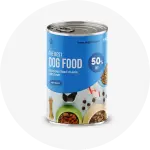
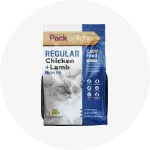




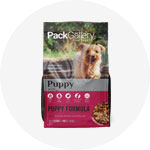
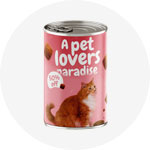
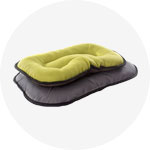

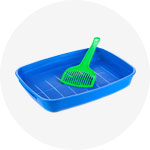


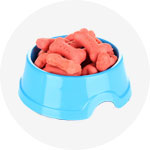
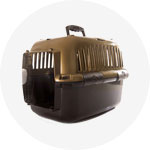



Jørgen J. Hansen
Aenean volutpat nisl id lorem posuere pretium. Nam scelerisque commodo congue. Proin eu ornare dui. Ut molestie est tellus, vitae iaculis erat iaculis a. Nulla non gravida leo. Nulla consectetur elit quam, vel suscipit tellus pellentesque sed.
Jørgen J. Hansen
Fusce consectetur mauris at eros feugiat, ut luctus arcu maximus. Etiam ac risus volutpat, convallis odio quis, hendrerit quam. Nulla gravida augue nec fringilla rhoncus. Praesent consectetur sed ligula eu luctus. Etiam eget eros ut ex tincidunt ultricies ut ut tortor.